How To Choose The Right Arrow For A Hunt
 How To Choose The Right Arrow For A Hunt
thegearhunt.com
How To Choose The Right Arrow For A Hunt
thegearhunt.com
If someone doesn’t know anything about archery, let alone bow hunting, they might simply guess that all you need to worry about is how to pick up an arrow, stick it on the bowstring, then let it go. Well, there’s a bit more to it than that. You need to know when to use different types of arrows, just like some bows are better for some hunts than others. If you’re just getting started, just follow along, and let’s take a look at how to figure out how to pick the right arrow for the hunt.
What type of animal are you hunting?
When picking your arrow, first determine what you’re looking to hunt. If you’re able to, it’s best to build arrows suited to your hunt. For example, ungulates like whitetail deer, elk, antelope, etc. are all animals that move often, can move quickly, and do not have thick hides. Choosing an arrow that is a bit lighter and can fly faster may be the better choice. Likewise, in elk hunting, most shots can vary greatly in range. A faster flying arrow will have less travel time and ensure that your arrow can get to its target before the target moves. Hunting in larger open spaces can benefit from a faster-flying arrow as it also increases your effective range.
In areas like Texas, hog hunting is very common and requires a different style of setup. Hogs have a thicker hide and require more energy behind the arrow to penetrate. Picking a heavier arrow here will increase the energy behind the arrow in exchange for speed and range. If you’re unable to build arrows specific to your hunt, as this can get expensive, opt for an arrow that allows you a high enough kinetic energy for your game of choice. Use an arrow kinetic energy calculator to give you an estimate and make sure it falls into the range of your hunt.
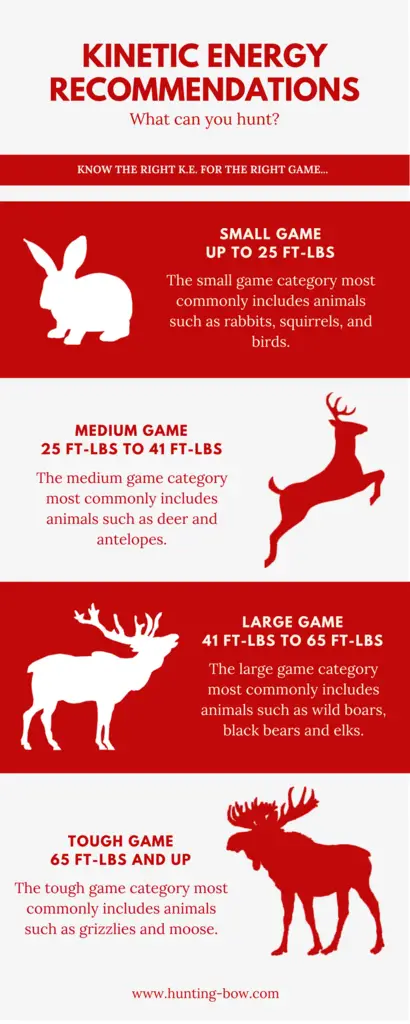
Fixed vs Mechanical Broadheads
Fixed vs Mechanical broadheads is perhaps one of the most highly debated topics in the hunting world. Each broadhead has its advantages and disadvantages and choosing the correct tool based on your bow and your desire to tune your bow.
Mechanical broadheads have the great advantage of requiring little to no additional tuning as they are designed to fly the same as field points. Meaning the arrow will fly very similarly through wind and long distances. However, mechanical broadheads have two detriments. Once used, a mechanical broadhead is typically damaged and cannot be reused. Additionally, mechanical broadheads require good conditions to “open” and deploy the blades to work. Mechanicals have tons of stories of failures and wounding animals, both of which are horrible situations to experience as a hunter. Generally speaking, a bow producing a high-energy arrow can have success with mechanical broadheads and the ease of setup is great.
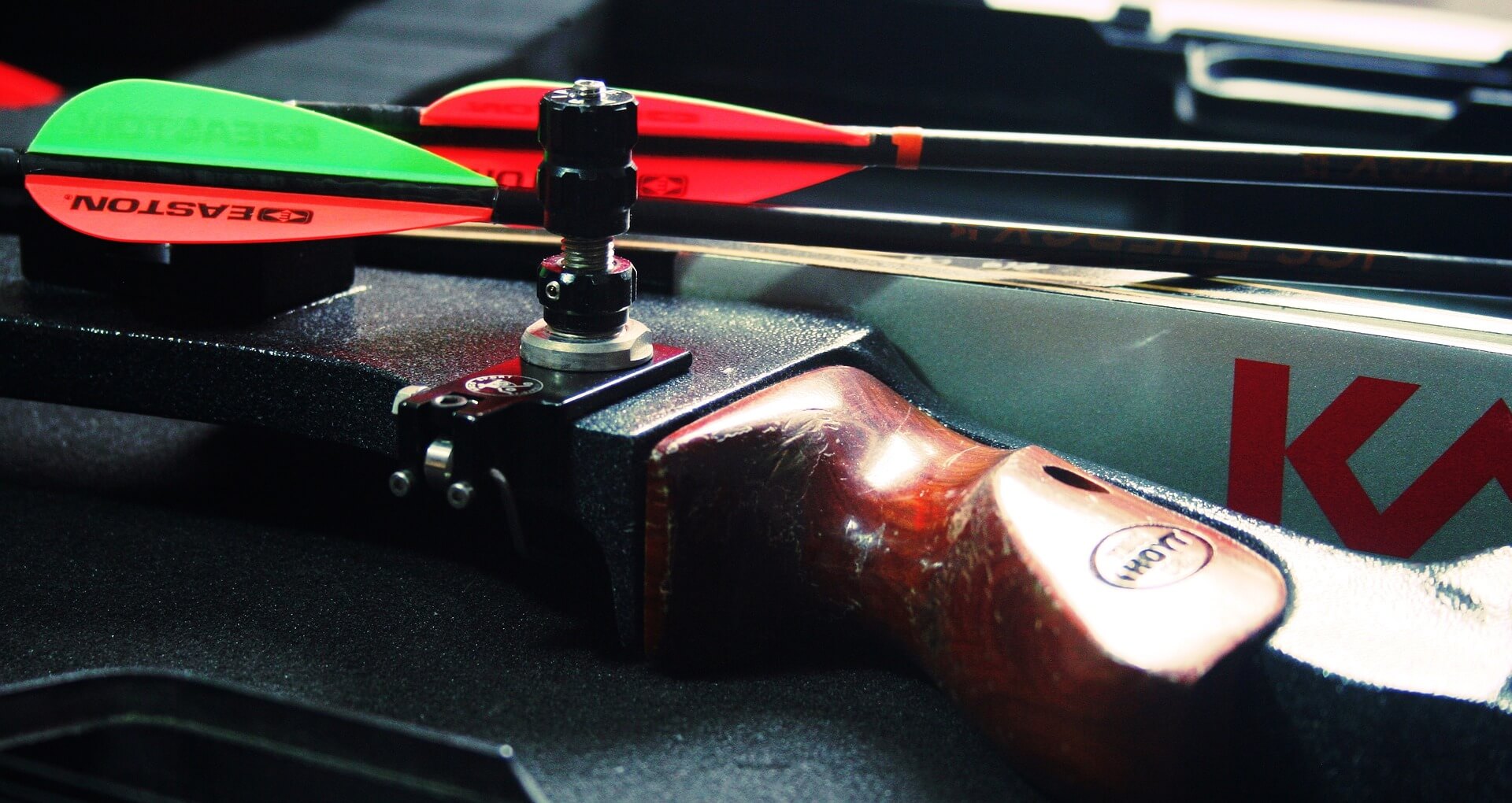
Fixed blades have been around since the beginning of archery and have a strong track record. Fixed blades come in many styles, but their largest advantage is the cut on contact blades they have, making them effective in a wide variety of bow setups. However, you can effectively imagine the broadhead as an additional set of feathers on the front of the arrow, influencing its flight. This increases drag on the arrow and may require tuning your bow differently to shoot accurately. Additionally, fixed blades can typically be recovered and can be sharpened, making them a cost-efficient choice.
What Is Arrow FOC?
FOC means “front of center” and describes where the balance point is on your arrow, based on the distribution of weight across your arrow. In most arrow setups for hunting, having a FOC between 13-15% is ideal. Higher FOC arrows have a more stable flight at longer distances, however very high FOC arrows also cause the arrow to drop faster in its trajectory.
To change your FOC you can either remove weight from the nock end of the arrow or add weight to the point. The most common archery target and hunting points come in 100 grains and 125 grains, however, arrow components are highly flexible. Gold Tip has an arrow system called F.A.C.T. that allows you to add 25grain and 50grain weights on the inside of your arrow without requiring the replacement of your insert. This can be awesome for quick tinkering. Otherwise, almost every arrow manufacturer and even aftermarket manufacturers sell weighted arrow inserts to help you increase your point weight for your desired arrow.
Does The Arrow Spine Make a Difference?
Modern bow technology produces high amounts of energy and transfers this into an arrow during the shot process. Choosing a good arrow spine for your setup is absolutely essential to have an accurate and consistent arrow. Arrow spine means how stiff the arrow is, and varies in the range with a lower number meaning a stiffer arrow. All arrow manufacturers have a spine chart that helps you decide which arrow to choose for the setup you are looking for.
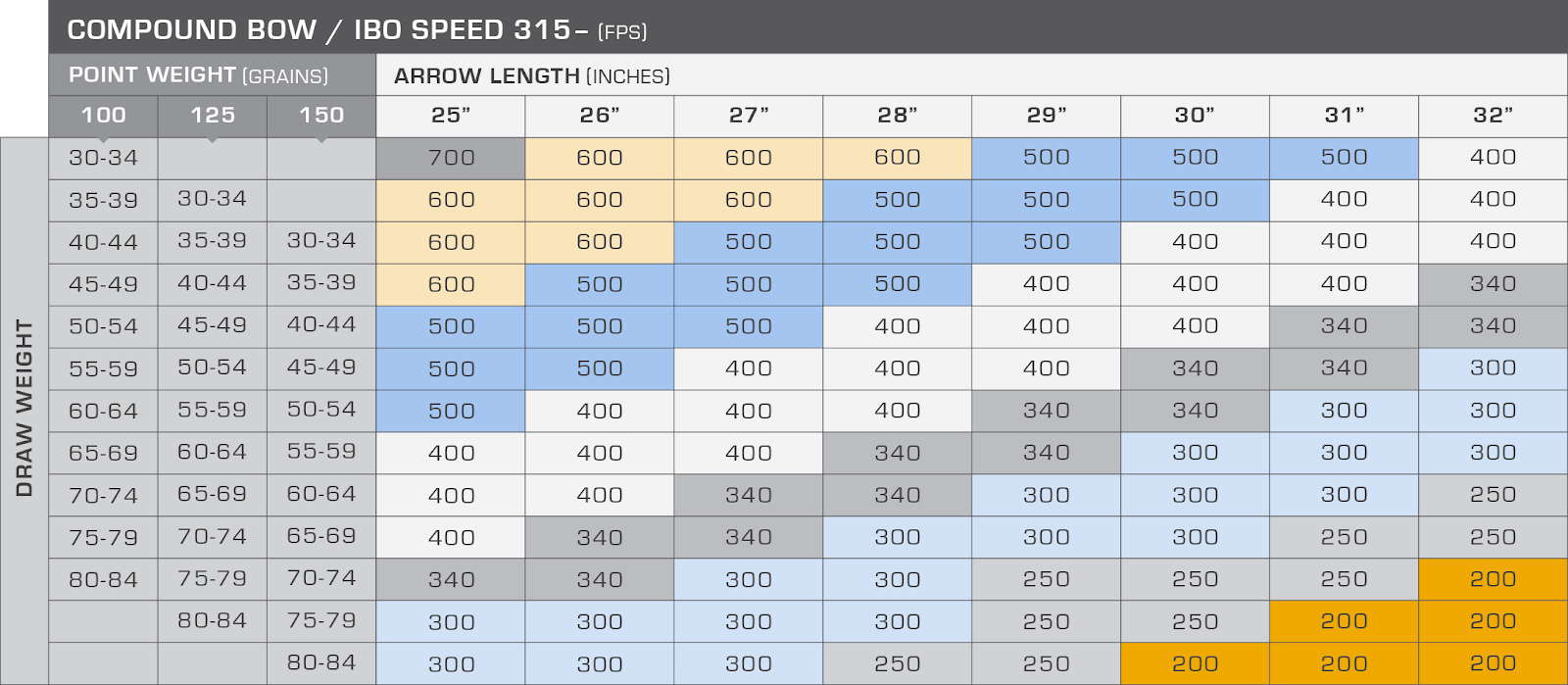
The charts will look similar to this one from gold tip and have a few key factors to pay attention to.
- bow draw weight
- Bow IBO speed, as two 70lb bows may not produce the same amount of energy
- Arrow length
- Draw length
- Arrow point weight
The combination of these factors influences which spine arrow you should purchase. If you choose to create a heavier point weight than what is listed, you will need a stiffer spine arrow as increased point weight decreases the rigidity of your arrow during flight. If you see your setup is on the borderline of two spines, pick the stiffer spine. An under-spined arrow will look like a wet noodle when flying and can cause a large grouping on target.
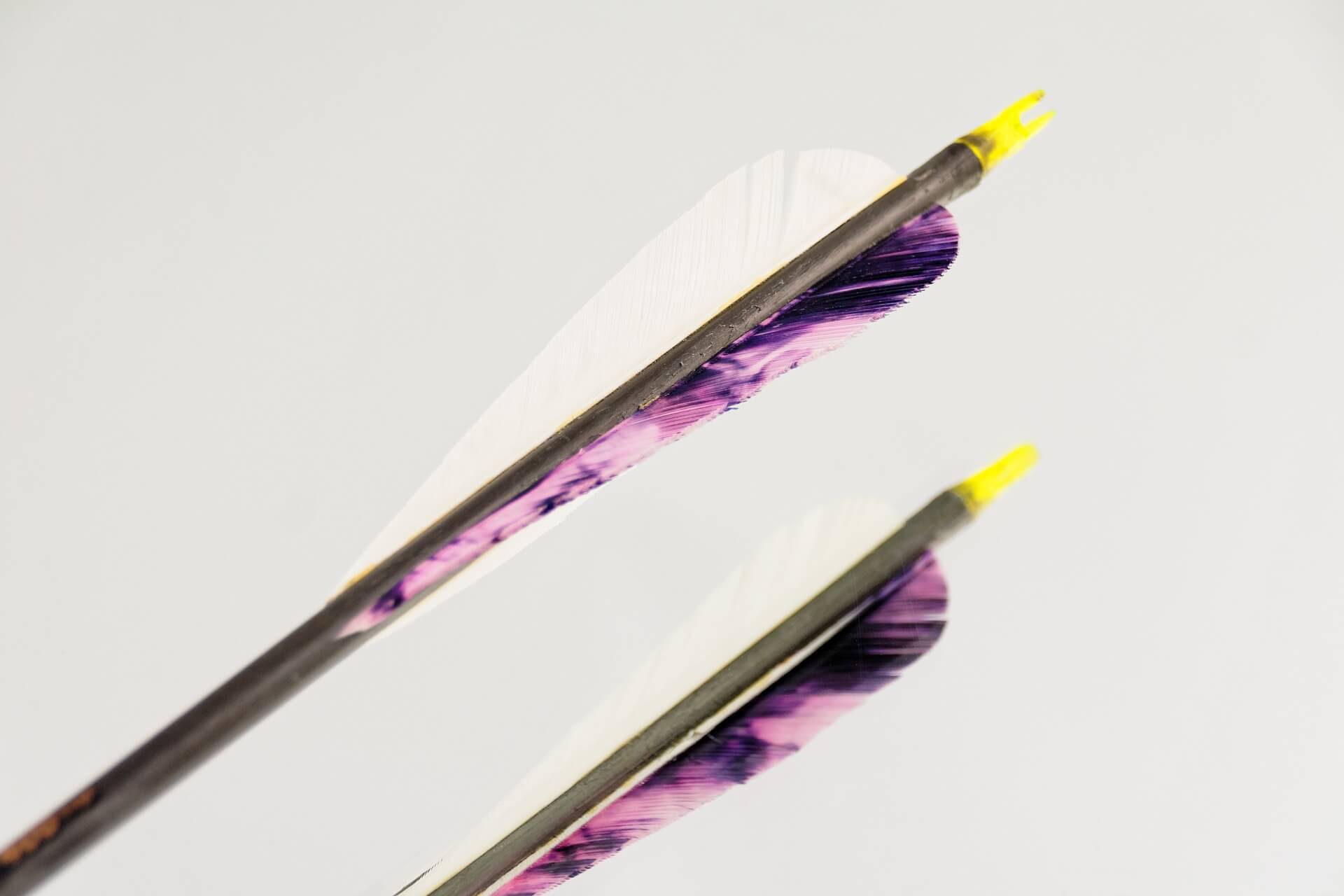
Arrow Diameters and Straightness
Arrows come in many different sizes and specifications. These factors can be important in long-distance shots. Diameters can vary in range and can increase your price as well. Smaller arrows will have less wind resistance and can penetrate a target better because of the decrease in surface area. Smaller diameter arrows tend to also be more expensive and can sometimes sacrifice rigidity. A middle-of-the-road arrow will be around 6-6.5mm in diameter. Picking arrows in this range and lower are recommended, higher diameter arrows are better for target archery.
Straightness is another factor as it influences your arrow flight and the performance of your arrow, over longer distances. The straighter an arrow, the more accurately it will fly and the more expensive it will be. This is a great area to save on cost depending on your hunting game of choice. Each arrow model will typically have 3 sets of tolerances, +/- 0.06”, 0.03”, and 0.01” being the straightest arrow.
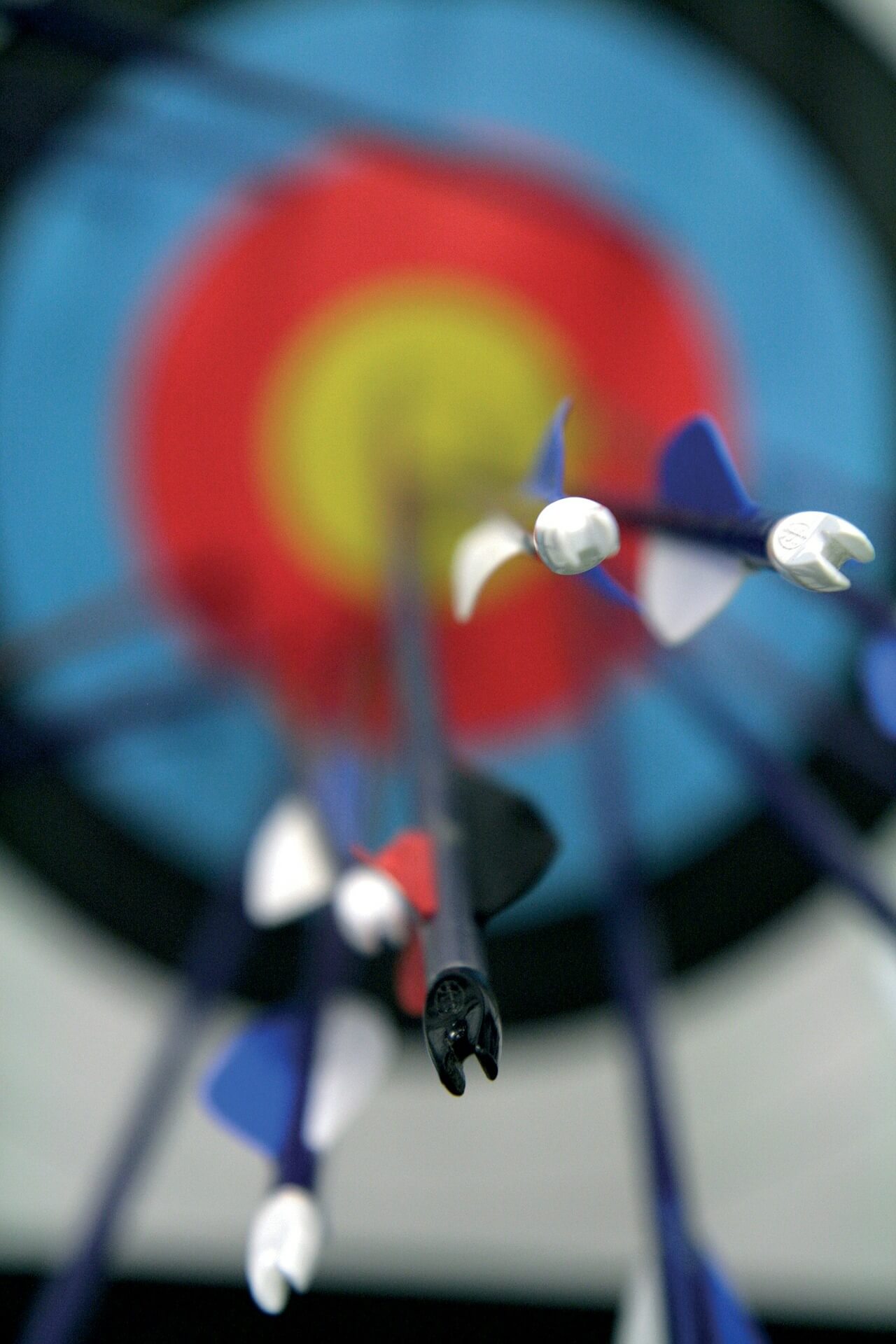
See? It’s not an impossible science but is important to understand before you head out to the field for a hunt. Similar to long gun hunting, having the right ammunition will make a world of difference when your target is in range and you’re ready to release that arrow. And remember, it’s always a great hunt if your having fun!















